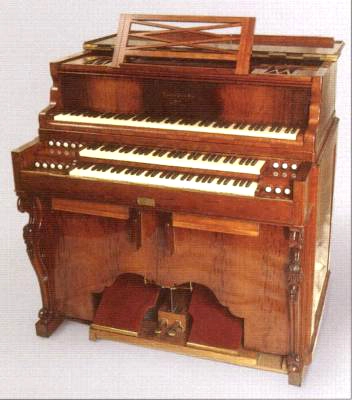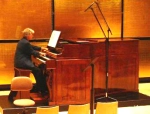
When the congregation of the Catholic Heilig-Geist-Kirche in the historic Hanseatic town of Lemgo, North Rhine-Westphalia, embarked on a renovation project from 2021 to 2023, they sought to replace their aging electronic organ with a proper pipe organ but were constrained by budget limitations. An opportunity arose to acquire a nearly century-old Wurlitzer Style D theater organ, built by the Wurlitzer factory in North Tonawanda, New York (near Niagara Falls), in 1924. The organ was first acquired in the late 1940s by Dr. Howard C. Stocker for his personal use in Los Angeles. By 1955, Stocker had moved the organ to San Bernardino (just east of Los Angeles), installing it in a custom-built home specially adapted to accommodate the instrument’s size and requirements. The house soon became a popular venue for concerts. In 1987, tragedy struck when a fire destroyed the entire house–but remarkably, the organ survived. Despite the unfortunate event, Stocker was quite relieved because he believed a house could be rebuilt, but the Style D organ was irreplaceable.

After Stocker’s death in 1993, the organ was temporarily stored in Kansas before being transported to Celle, Lower Saxony, Germany. There, cinema organ enthusiast Friedhelm Fleiter–who had long sought a Wurlitzer Style D–discovered it. For many years, Fleiter preserved and maintained the instrument as a personal passion project. To ensure its functionality, several components were carefully restored and modified for use in the church; however, preserving the original organ’s design and architectural integrity remained the top priority.

When the organ was relocated to the church, preserving the original Wurlitzer Style D façade proved impossible. Instead, a new organ case was designed to complement the church’s architectural style. The organ’s structure consists of two vertically stacked, roughly cube-shaped sections, along with a freestanding console. The upper section houses the pipework and features swell doors on two sides, which remain closed when the organ is not in use to ensure the enclosed pipes stay in tune. Although the new organ cannot fully replicate the musical fidelity of the original, it serves its purpose well in worship settings, particularly for accompanying congregational singing.
This according to “100 Jahre und kein bisschen leise: Eine Wurlitzer-Orgel (1924) für Lemgo” [100 years old and not a bit quiet: A Wurlitzer organ (1924) for Lemgo] by Ralf-Thomas Lindner (Organ: Journal für die Orgel 27/4 [2024] 26–30; RILM Abstracts of Music Literature, 2024-20513).
Listen to Singing in the rain performed on a Wurlitzer Style D organ below. The second video features a different model Wurlitzer organ.
Related Bibliolore posts:
https://bibliolore.org/2022/08/04/the-fokker-organ/













